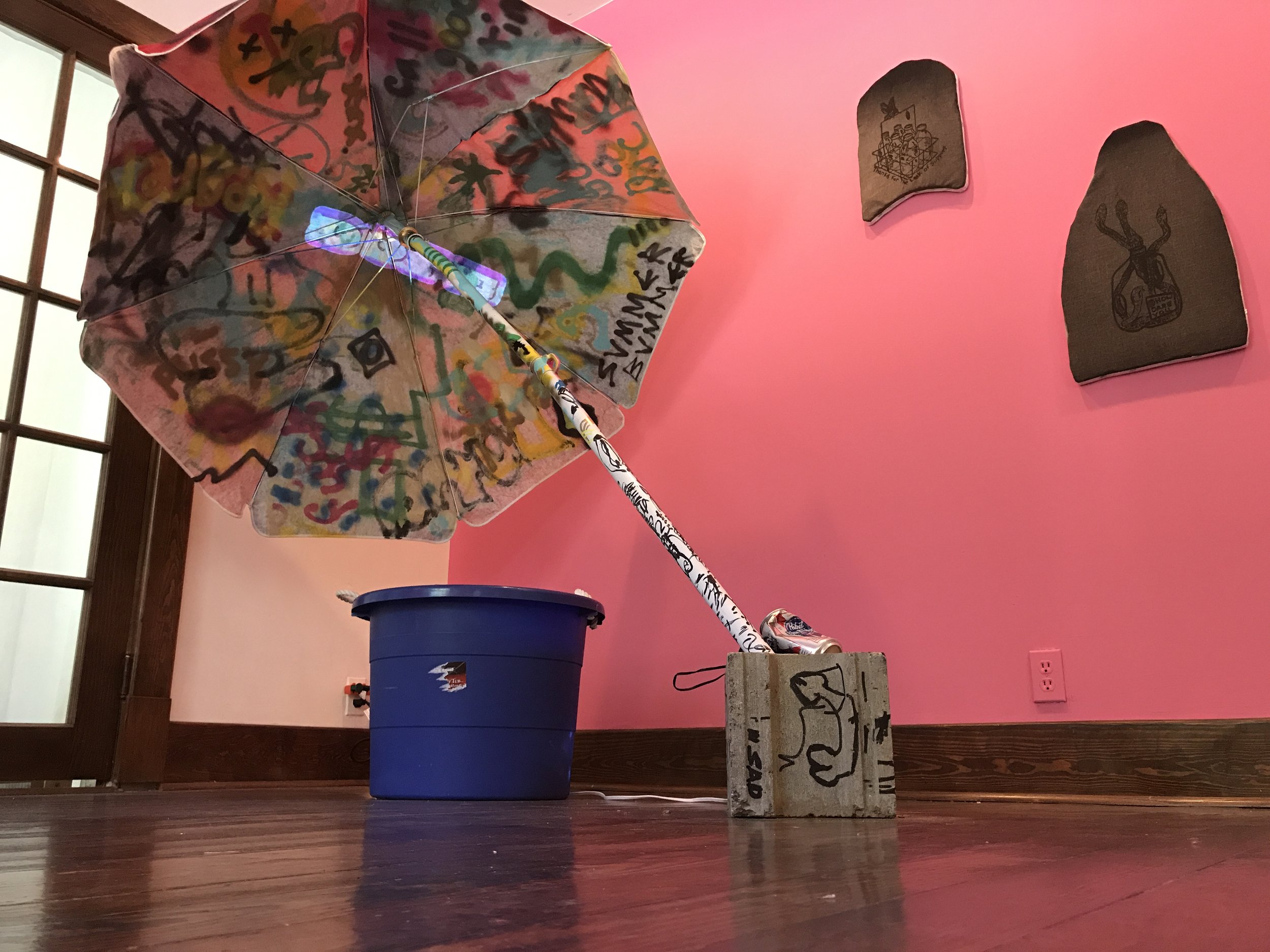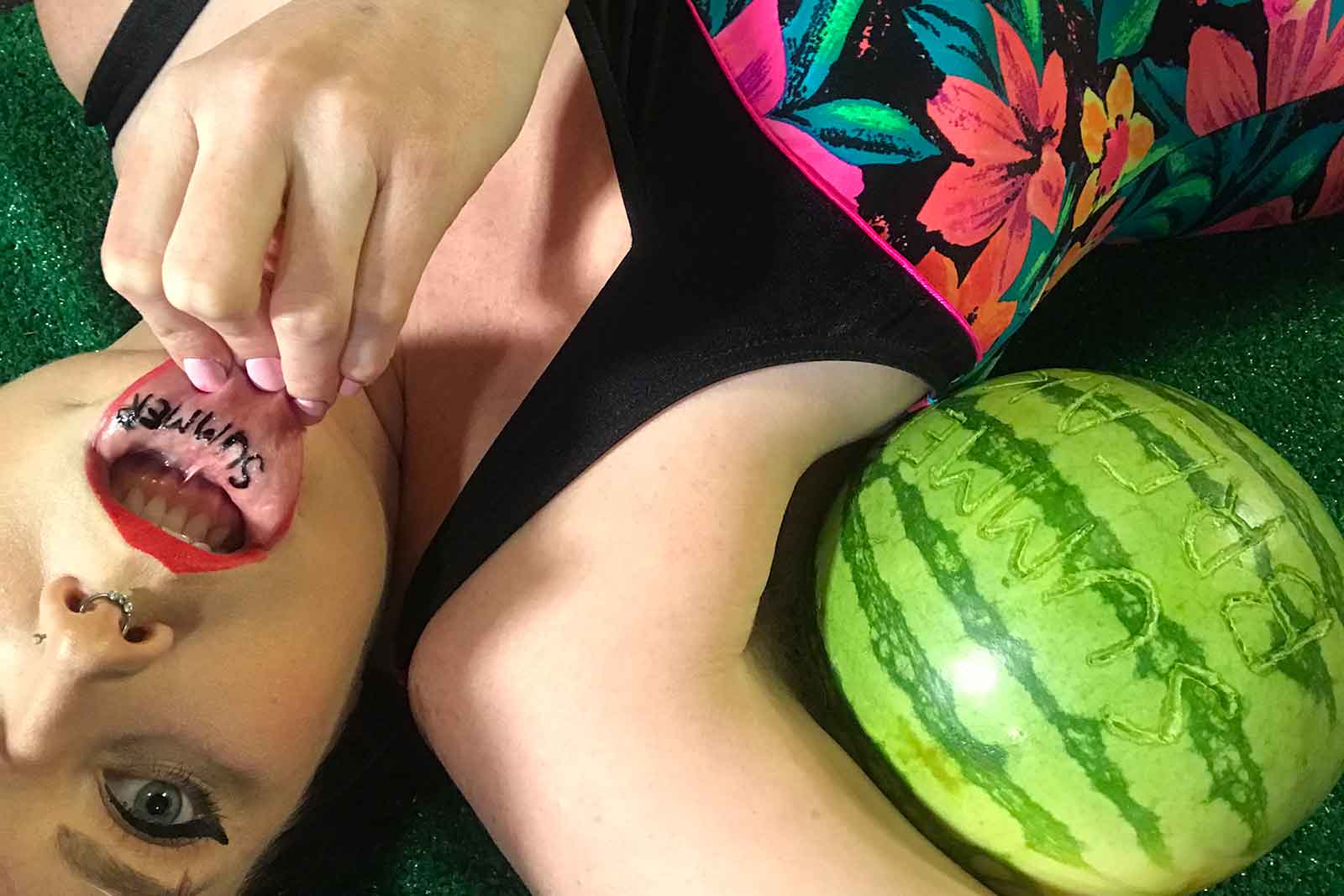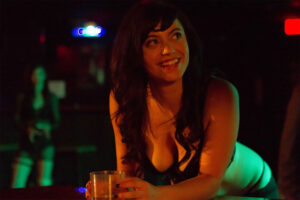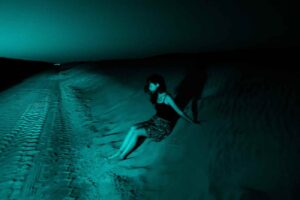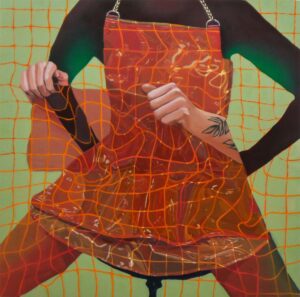This is the American Dream. This is my fuckin’ dream y’all! All this sheeyit! Look at my sheeyit! I got SHORTS! Every fuckin’ color. I got designer t-shirts! I got gold bullets. Motherfuckin’ VAM-pires. I got Scarface. On repeat. SCARFACE ON REPEAT. Constant y’all! – Spring Breakers
When I speak with performance and installation artist Katie Lee Mansfield, she tells me a gun will arrive on her doorstep the very next day. “A tattoo gun,” she insists, giving credence to the rumors circulating around her appearances.
Mansfield’s show, Summer Break, has been shrouded in mystery from the beginning. Along with an unknown event involving the tattoo gun, there’s said to be a kiddie pool infused with the smell of morning-after beer, a wet t-shirt contest, and a snake. I was only able to confirm the presence of the first three.
In Summer Break, Mansfield—who grew up in rural America, isolated from “break parties”—explores her fascination with the particularly American notion that you can reinvent yourself by changing location; in this case, a warmer place with more sunshine—and more beer. But Mansfield’s Summer Break points out that a life of perpetual intoxication, sex, and sun-drenched pool slothing would eventually become its own unique version of hell.
“[Summer Break] is hopefully going to make you look, and then think. And a lot of these spring break activities are all about looking, and not thinking. And it’s the thinking part that’s really important. The thinking part saves lives, the thinking part stops abuse. The thinking part is what we’re lacking in this society.”
Your work addresses a lot of themes in contemporary youth culture. What is it about American “break parties,” as you call them, that you find so fascinating?
Katie Lee Mansfield: I think growing up really poor and not really belonging to a culture that could afford to go to parties or travel to these locations that feel really new, and feel really exciting, and feel extravagant. As I grew up, I didn’t have cable, but I would go over to my friend’s house and we would turn on the TV and there would be these spring break programs on, and there was something so inviting [about them]. There was this internal, Oh my god, what are these people doing? This looks really fun and really exciting. But as I grew up and I looked back, I thought, Why the hell was that something I wanted? The truth is, there’s a lot of abuse happening, a lot of sexism, a lot of homophobia, a lot of really negative undertones happening in this kind of environment. The things that people put themselves through are kind of absurd.
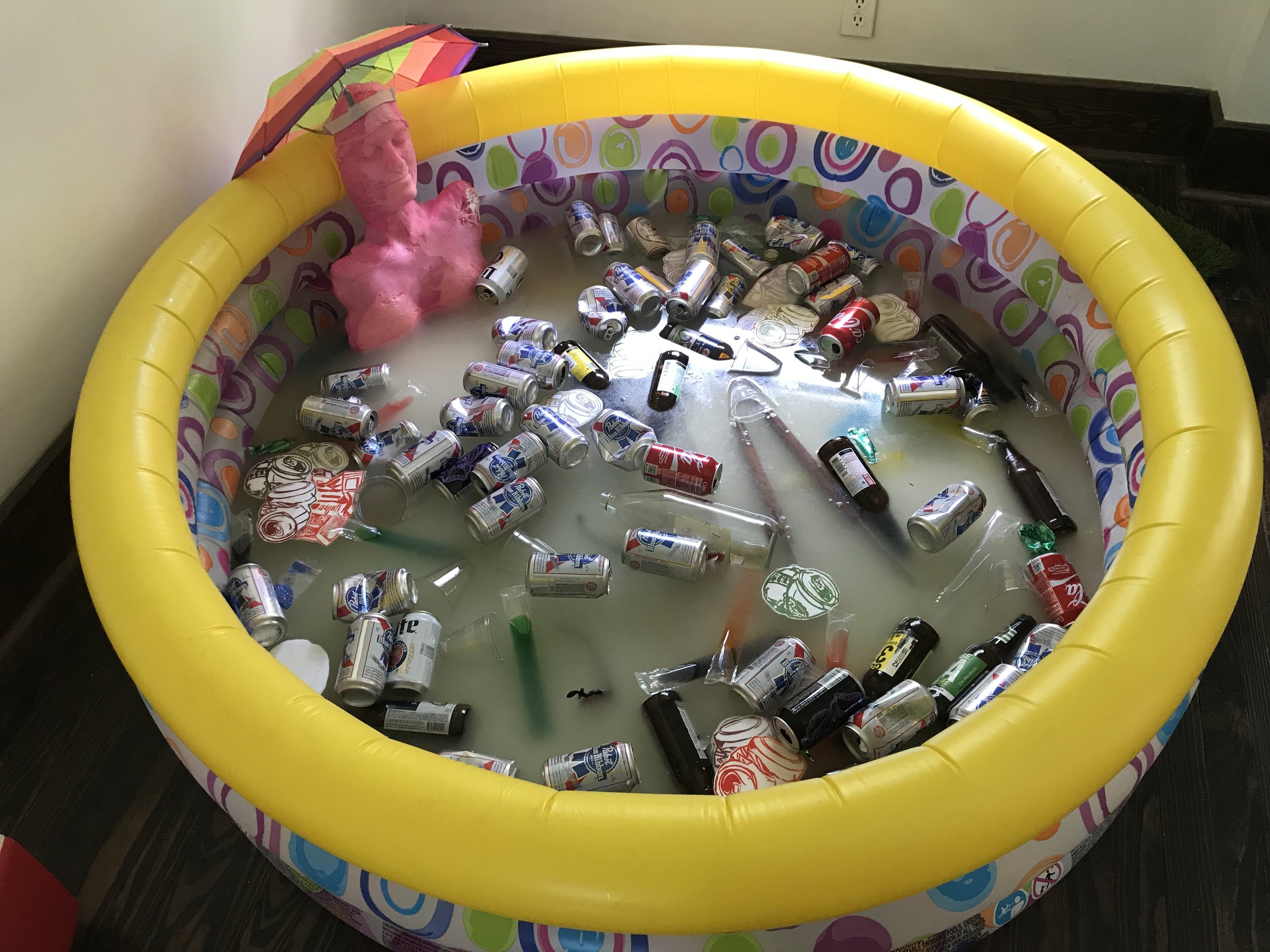

It’s a type of ritual.
KLM: Yeah. It’s a coming-of-age ritual that I never went through, and I’m past that point in my life, but I think it’s a rich area to look at in terms of the development of our youth in America.
Spring break is typically the break associated with the most debauchery. Any particular reason you chose to name this show “Summer Break”?
KLM: I think it’s an homage to myself. This is going to probably be my last summer break. Although summer break doesn’t have the connotation of wild and crazy, there still is the idea, you can go a little wild, you can have your summer romance, there are still moments in there that are prominent to parties.
There seem to be a lot of fantastical or hyperreal elements going on in those moments.
KLM: Yeah, there’s a feeling that you’re never in the know. It’s like, oh my god, all these beautiful people are posting these things on Instagram and Facebook and here I am in my bedroom in my bikini sweating my ass off because I don’t have an air conditioner. There are these really weird psychological things happening, and these desires during these breaks because as a culture for some reason we dedicate a particular moment of time to let loose. This is when you’re supposed to go wild.
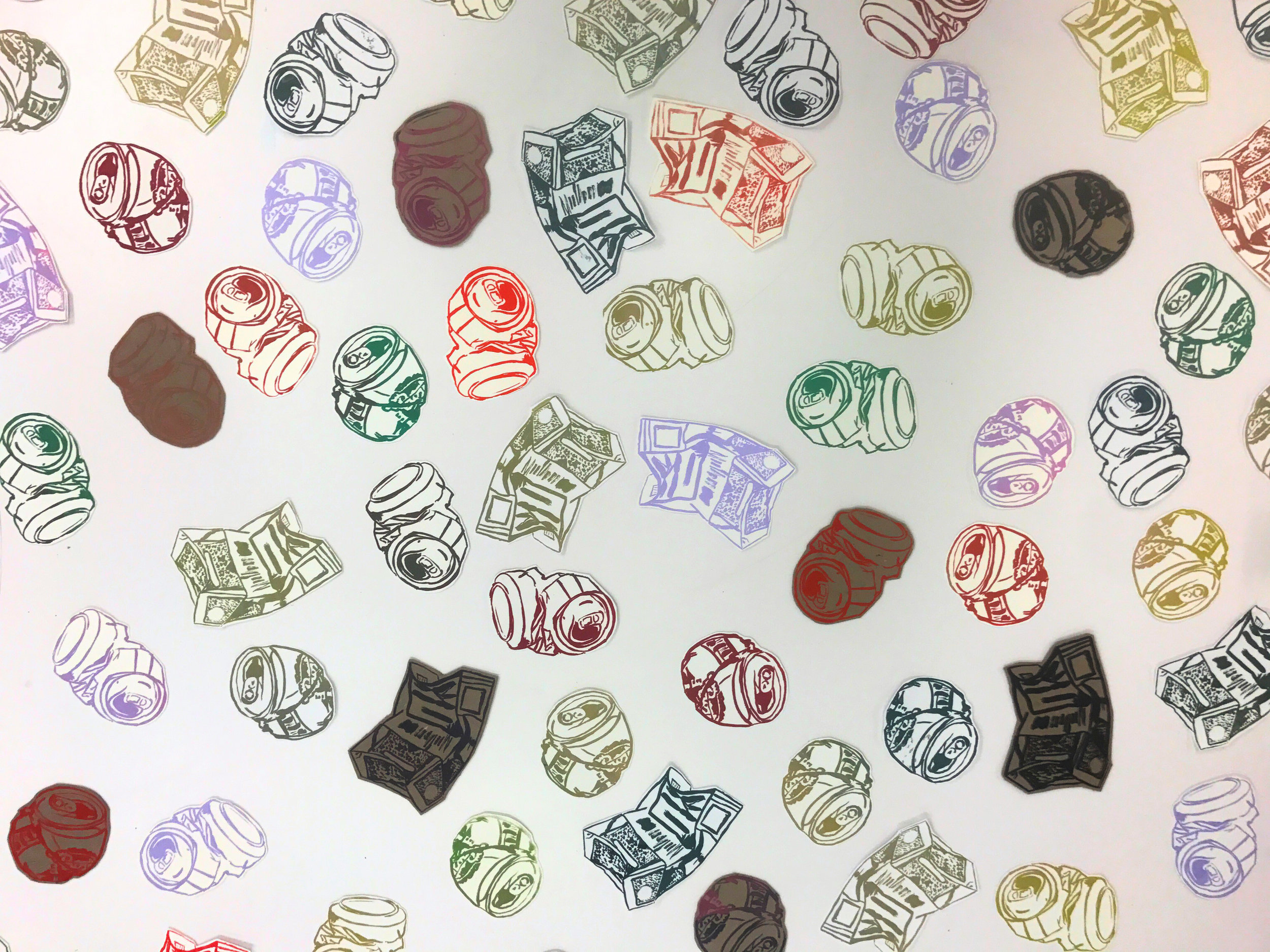
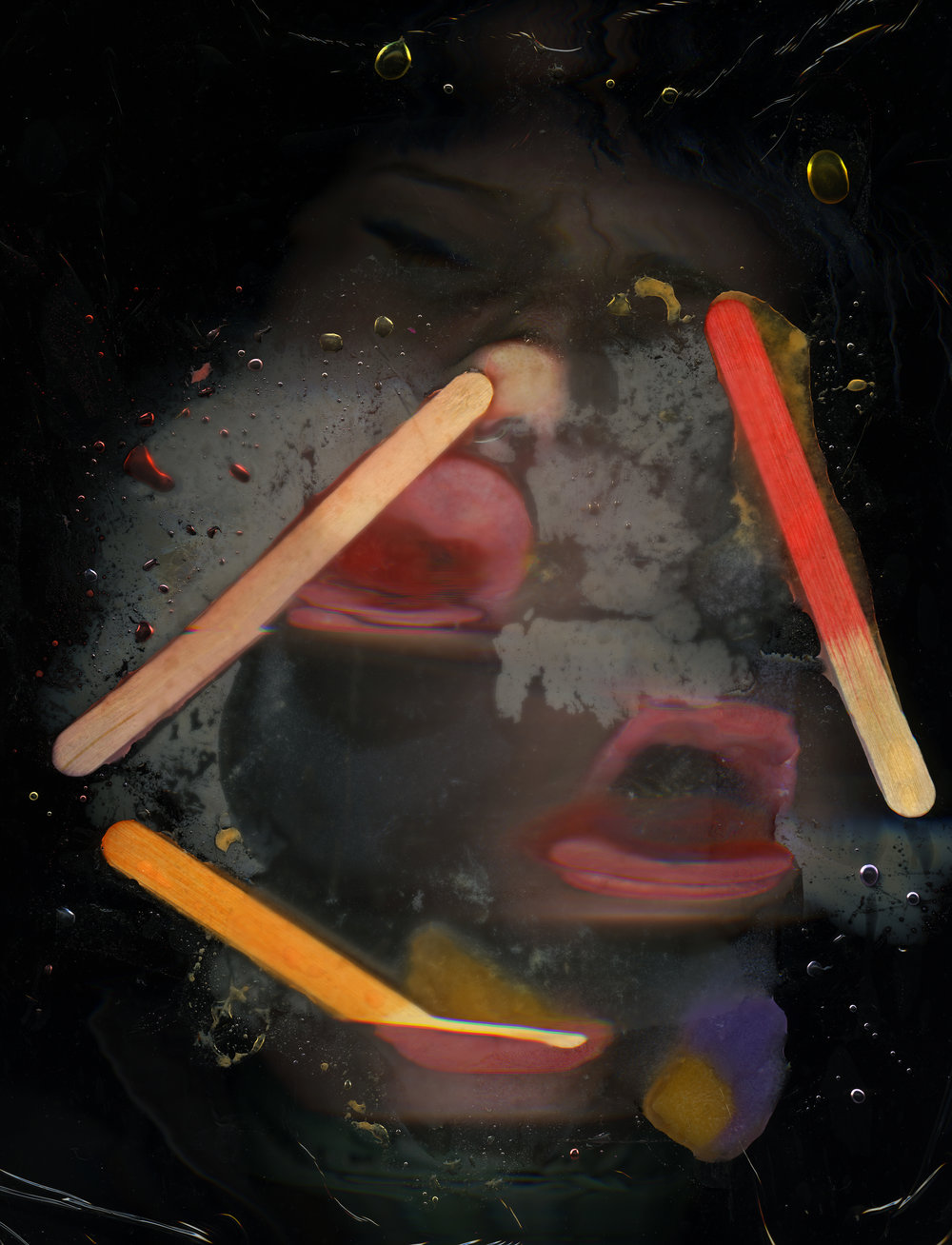
How does “Summer Break” differentiate itself from the themes in “Spring Breakers?”
KLM: I just watched that the other day—again. It was part of my research. How am I going to ignore Harmony Korine’s “Spring Breakers?” [Korine] is really unearthing the crazy extremity of possibility within these break parties. I’m not really hitting on the innate violence with weapons, though. I’m not going to have anything weapon oriented. But I am going to playing a lot with sexuality.
How do you reconcile the expression of female sexuality with issues of sexism and objectification?
KLM: In a perfect world, we can have celebratory events where women are free to explore their sexuality, to wear what they want, to act how they please without judgement from others, but I don’t think that we’re there. There’s still a lot of sexism, there’s still a lot of misogyny, there’s still a lot of pushback toward the female body and the woman as a free agent. [My show] is hopefully going to make you look, and then think. And a lot of these spring break activities are all about looking, and not thinking. And it’s the thinking part that’s really important. The thinking part saves lives, the thinking part stops abuse. The thinking part is what we’re lacking in this society.
